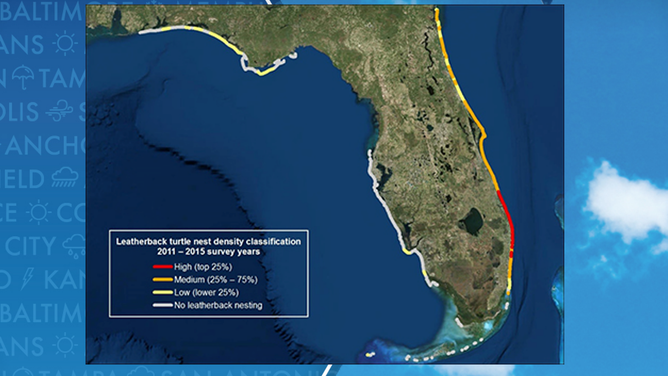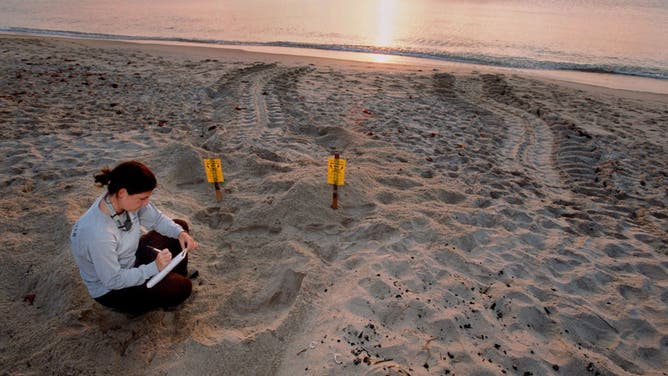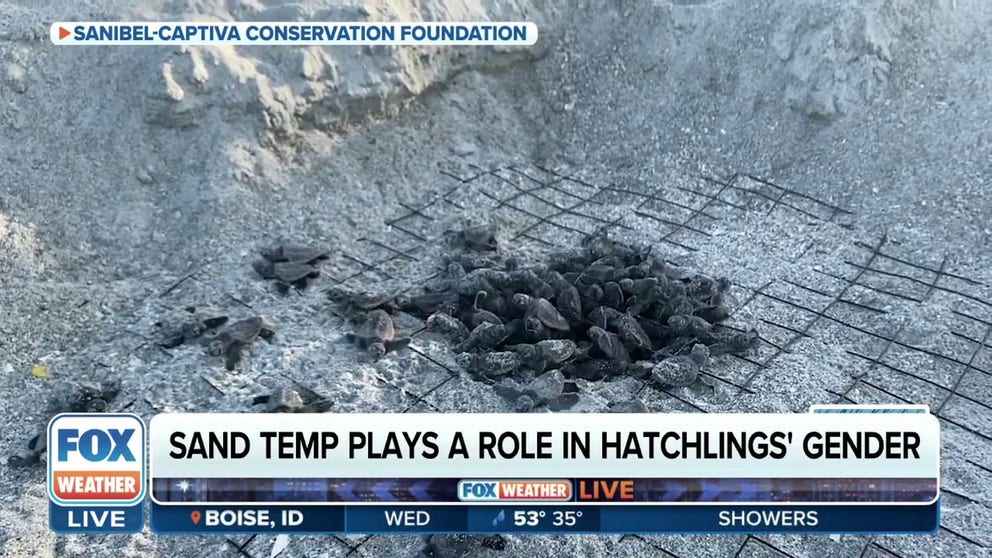Florida marine center reports breaking sea turtle nesting record
The 2023 sea turtle nesting season in Florida broke records, but marine experts warn there is more to the numbers than meets the eye, which puts a damper on any celebrations.
Conservation teams survey Florida beaches for sea turtle nests
FOX Weather's Brandy Campbell joined the Broward County Sea Turtle Conservation Program as they survey the beach for new sea turtle nests.
JUNO BEACH, Fla. – The 2023 sea turtle nesting season in Florida broke records, but marine experts warn there is more to the numbers than meets the eye, which puts a damper on any celebrations.
The Loggerhead Marinelife Center in South Florida reported a record-breaking 25,025 sea turtle nests in 2023. Many of the nests were from loggerheads, but the leatherbacks and green turtles also had a significant year.
Beaches around the Sunshine State reported similar figures, with many eclipsing the highest reported amounts on record.
The Florida Fish and Wildlife Conservation Commission reported a preliminary count of just over 134,000 loggerhead nests, 76,645 green turtle nests and 1,711 leatherback nests.
In 2022, the Florida Fish and Wildlife Conservation Commission reported 116,765 loggerhead turtle nests, which was, at the time, the highest figure in more than five years.
"This milestone achievement for sea turtle conservation is attributed to various conservation efforts over the past few decades," the Loggerhead Marinelife Center said in a statement. "This includes major changes to fishing regulations in the late 1980s in addition to standardized monitoring and protection efforts of nesting females and hatchlings on nesting beaches. The ‘leave no trace’ policy also remains an important practice, which instructs beachgoers to collect all trash and belongings before leaving, and to fill all holes to prevent nesting sea turtles and hatchlings from falling or being hindered as they crawl on the beach."
In addition to the marginalized human involvement, most critical nesting areas were spared from hurricane activity, especially during the peak summer months.
Hurricanes are known to tangle hatchlings in seaweed and lead to increased vulnerabilities of nests through erosion and currents.
Volunteer groups combed the beaches after Hurricane Idalia struck Florida’s Big Bend but did not report widespread disruptions.
Leatherbacks nest almost exclusively on Florida's east coast, with around half of all nesting occurring in Palm Beach County.
WHAT ARE ‘COLD-STUNNED’ SEA TURTLES?

Leatherback nesting in Florida map
(FWC / FOX Weather)
Climate change impacts loom
"This year’s record-breaking numbers are a victory for sea turtle conservation," Dr. Justin Perrault, vice president of research at Loggerhead Marinelife Center, said in a statement. "With that in mind, it is important to remember that our work is not over, as new threats continue to present themselves to these animals."
An emerging threat scientists say is impacting nesting seasons are warmer air and water temperatures.
Climate change can lead to a decrease in reproductive success and alter the population.
FLORIDA SEA TURTLE POPULATION BOOM MAY NOT BE A GOOD THING, EXPERT WARNS

Marine scientists study the Leatherback Turtle ( Dermochelys coriacea ). Counting nests and eggs monitors the health of this endangered species, Florida. (Photo by: Mark Conlin/VW PICS/UIG via Getty Image)
(Mark Conlin/VW PICS/UIG via Getty Image / Getty Images)
"In reptiles, temperatures determine the gender, and in sea turtles warm temperatures create females," Joel Cohen of the Sea Turtle Preservation Society told FOX35 Orlando. "We have 99 to 100 percent female nests. So that's not going to bode well for a future sea turtle population."
Sea turtle nesting season typically runs from March through October, but leatherback activity can start as early as February.
According to the FWC, five species of sea turtles call Florida's waters home: leatherback (Dermochelys coriacea), loggerhead (Caretta caretta), green turtle (Chelonia mydas), hawksbill (Eretmochelys imbricata), and Kemp’s ridley (Lepidochelys kempii).
All of the species are listed as either endangered or threatened and are protected by regulations, including the federal Endangered Species Act.
Marine experts say it is illegal to harm, harass or kill any sea turtles, including their eggs.
Hurricane season poses threat to sea turtles
Joseph Widalski, VP for Sea Turtle Trackers, joins FOX Weather to talk about how hurricanes impact sea turtle habitats along Florida beaches.

